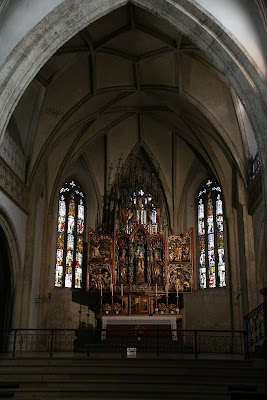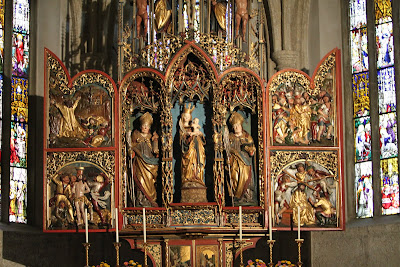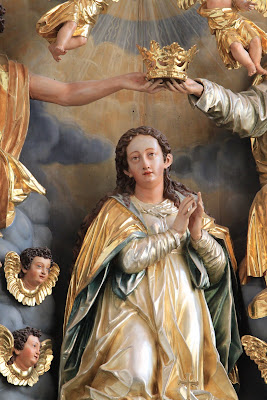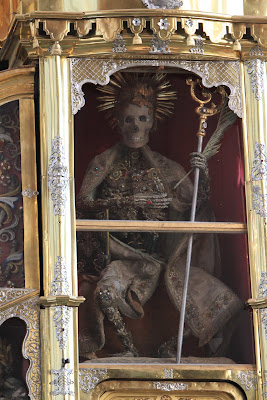In our first installment we covered the altarpiece in Spain. I am of the opinion, however, the the art of the reredos, retable or altarpiece reached its peak in the former lands of the Holy Roman Empire – Germany, Austria, South Tirol etc. Here we can find magnificent examples from the late Gothic through to the beginnings of neo-classicism.

In the Nonnberg Benedictine monastery of Salzburg there are a number of fine examples of medieval art – including this Gothic reredos at the main altar. (The future Maria von Trapp was a novice here).


The late gothic altar often featured wings or side panels, which could be either painted or carved. In some cases they could be moved to present a different set of images depending on the season or to enclose the main figures.

German late gothic altarpieces were surmounted by a crest or crowning (Gesprenge) often supporting further holy images.

Whereas in the rest of Salzburg the baroque triumphed in the secluded realm of this convent the late Gothic interior remained intact.

For an early baroque example, we turn to the church of Mondsee, not too far from Salzburg. Some may recognize this altar as that actually seen in the wedding scene in The Sound of Music.


The coronation of the Virgin forms the centerpiece of this reredos. In the German-speaking areas (the Holy Roman Empire and Switzerland)there is continuity between the late medieval altarpiece, renaissance and early baroque creations and the final late baroque/rococo flowering in the eighteenth century,


Jewelled skeletons of saints complete what is, for American eyes at least, a unique and startling decorative scheme. We should understand such figures, however, as a much needed if drastic memento mori.
Related Articles
No user responded in this post